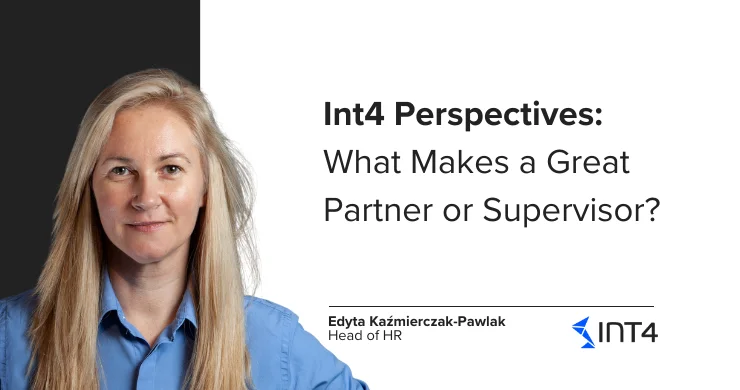SAP Integration: Why Making the End-User Your Priority Matters

SAP Integration – focus on the end-user
If you professionally deal with SAP Integration, you probably know how easy it is to get lost in the technical details between connecting different systems, ensuring data flows and correcting errors. But here’s a thought: What if the key to a successful integration isn’t just about the tech, but about focusing on the people who’ll use it every day?
This article is relating to one of the recent episodes of the Navigating SAP API Testing, during which we had a chance to talk about SAP Integration with SAP’s Petra Kloess:
Let’s chat about why making the end-user your main goal in SAP integration can make all the difference.
Understanding SAP Integration
So, What Exactly Is SAP Integration? In simple terms, SAP Integration is all about connecting your SAP software with other systems or applications your business uses. Integration allows Enterprises to create highly integrated business processes that increase their efficiency.
Think about a retail company that (for example) sells furniture via an e-commerce site. After a customer has made their purchase, the order automatically gets placed in a system that is further connected to other systems, so that the customer can for example receive their order confirmation and so that the furniture can get shipped to them as fast as possible. As you can imagine, integration is not a nice-to-have anymore.
Why Does Seamless Integration Matter? Imagine using a tool that feels clunky or forces you to jump through hoops to get things done. Frustrating, right? In 2024, when we’re used to fast and seamless technology, we expect everything to work together so well that we hardly notice the different systems behind the scenes.
And that’s exactly why you should prioritize the End-User.
Putting the End-User Front and Center
Petra Kloess puts it perfectly:
“A real integration is successful when everybody is not realizing that it is an integration. It’s like cleaning a house. A true integration is when you don’t see it, when it works seamlessly.”
The best integrations are the ones you don’t even notice. When the user interface feels natural and you don’t have to think about which system you’re using, that’s when you know things are working as they should.
Don’t let tech overshadow the User
Petra also says…
“As soon as you make the technical integration to be a goal, you’re wrong. Make the end-user a goal.”
It’s easy to get caught up in the technical aspects — but if these don’t make life easier for the end-user or increase business productivity, what’s the point? The real measure of success is how well the integration serves the people using it daily. Petra also brought some real-life examples to illustrate that point.
“I don’t want to know whether I am in a catalog or not. I don’t want to know whether this is a BTP app or whether this admin is… no. I just want to go to my portal on S/4 and say, ‘I need a new laptop.’ And then it says, ‘Here’s your catalog for laptops,’ and then I order the laptop.”
It’s about simplicity and ease of use.
SAP Integration lessons from Petra Kloess
As an experienced business person and the co-author of “Migrating to SAP S/4HANA”, Petra highlights that getting wrapped into technical milestones is a common trap of migration projects. During our conversation she said:
“I’ve seen many, many implementations where the PowerPoint was the goal. The list of integrations that were done, the testing result was fine, but nobody thought of the end-user.”
The result? A technically sound integration that doesn’t bring value to the business.
How to keep the End-User at the heart of Integration?
First of all – make it comprehensive for the users and really think about their needs. Petra says:
“Make it comprehensive. Then an integration is a beautiful thing, provides lots of value, and everybody’s happy with it.”
This means thinking beyond just connecting systems. It’s about ensuring users have everything they need — clear documentation, intuitive interfaces, support when things go wrong, and backup plans if a system goes down. For example – think about the following:
-
Documentation: Offer guides, FAQs, and resources that are easy to understand.
-
Support: Ensure there’s a support system in place that’s available for the end-user.
-
Downtime procedures: Have clear steps for users to follow if a system goes down.
What do you need to be able to focus on the end-user?
At Int4 our focus is to help Enterprise SAP Customers test their SAP Integrations in the most efficient way possible. Because in order to focus on the End-User, you need to first have methods and tools that will help you make sure that the system is working properly after making any changes. Especially if we’re talking about important migration projects. If you can’t properly test the SAP Integration, you simply cannot innovate.
How to make testing your SAP Integration easier?
Introducing the Int4 Suite – a powerful SAP Integration Testing tool that allows you to speed up the testing and ensure system quality at the same time, by taking advantage of modern technologies – such as SAP Service Virtualization. Learn more by watching this short video:
And if you’d like to learn more about using Int4 in your Enterprise, click the button below and schedule a product demo:
Popular tags
ABAP int4 INT4 IFTT Int4Interview S/4HANA SAP AIF SAP CPI sap integration



